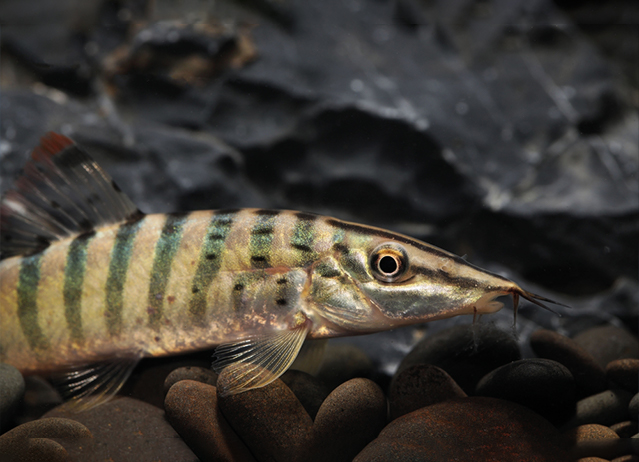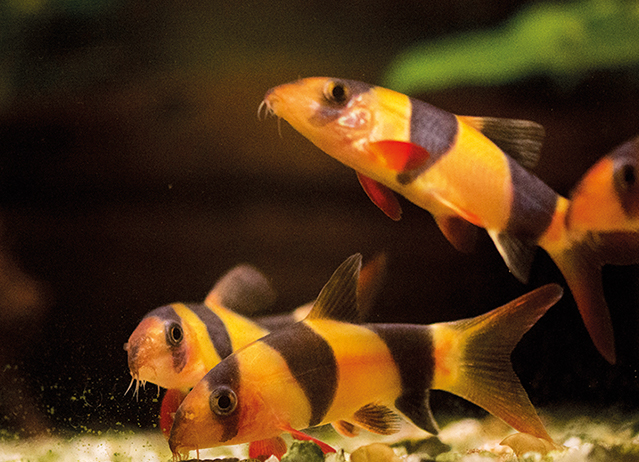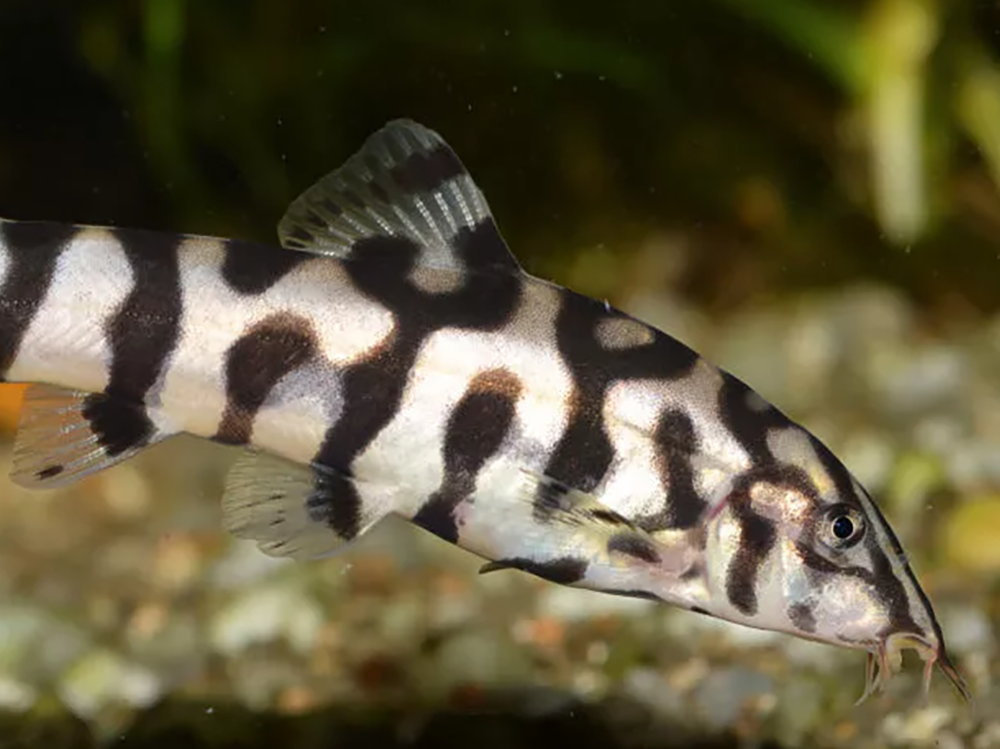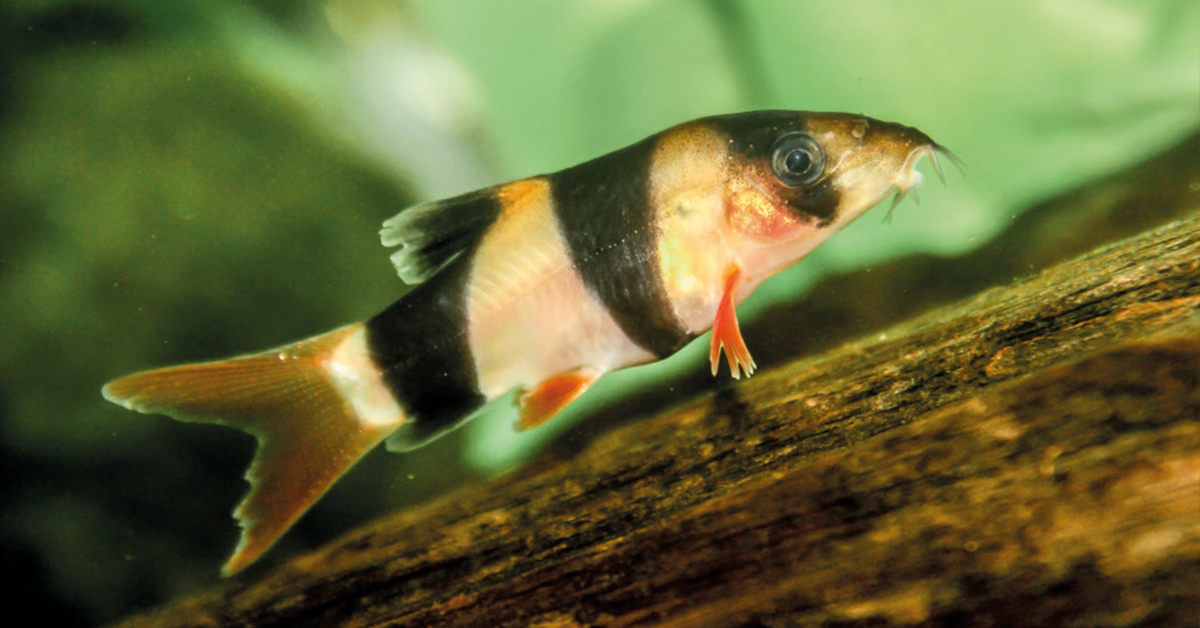About Loaches
| Size | Small |
| Group | Fresh Water |
| Temperament | Non-Agressive |
| Swimming Region | Bottom |
| Aquarium Size | Large (50+gal) |
| Fish Water Condition | Non-Aggressive |
| Suitable Tank Mates | Barbs, Danios, Tetras, Guppies, Mollies, Swordtails, Gourami |
| Difficulty of Care | Weekly Care |
Loaches General Info
Loaches Fish are among the largest freshwater fish families and have been greatly praised for their intelligence. Over 200 species exist with the defining features of an eel-like body and often have 3-6 pairs of barbells, which act as little feelers.
Loaches fish represent one of the large families of brilliant freshwater fishes.
Origins
The Loaches fish originally hail from Central and Southern Asia.
Colors
The coloration of Loaches fish can vary from red, yellow, gold, and brown, to black.

Maintenance and Care of Loach Aquarium Fish
Loaches Fish are one of the most social species among freshwater fish and should be kept in groups of at least three. Occasionally, they can bond together to the point where, when one goes missing or dies, other members may start suffering from stress. Provided proper care, some loach fish species can live up to 20 years—these loach fish will make for an advantageous aquarium experience.
Loaches fish spend most of their time swimming and foraging along the bottom of the aquarium. These are often the underpinnings of loach activities: to uproot plants and disturb rocks, pieces of wood, and other tank decorations. This should, therefore, be put into consideration when one is setting up a loach aquarium. They also appreciate a complex network of hiding places to which they retreat often. Most species of loach are also nocturnal and appreciate dimly lit aquariums. Some species of loach also grow to be as long as 12 inches and should be kept in the appropriate aquarium size.
Loach fish are not very aggressive and can coexist with most other species of loach aquarium fish.
Feeding
Loaches fish are omnivorous and will take on a good deal of prepared food. Since they are bottom feeders, pelleted types of aquarium food should be used to feed them. Plenty of fresh vegetable matter, like cucumbers and lettuce, should be incorporated into their diet.
Loaches fish are one of the most social species of freshwater fish and should be kept in companies of three or more.
Breeding
Loaches are very rarely bred in the home aquarium and are very, very difficult. They form very strong social bonds and sometimes do a complex courtship dance where they spiral around each other in a vertical movement.
Appearance and behavior
- Many loach fish species just like to bury themselves in the substrate.
- Most would prefer to be kept in schools of 5 or more.
- Loaches are scavengers and will eat almost anything.
- Many loach fish species do recognize their pet parent over time.
- Most loaches are hardy, so they do make for a good species for beginning aquarists.
- Most true loaches lack scales or have very small ones embedded in their skin.

Common Health Problems
| Health Problems | Symptoms | Suggested Action |
| Cottonmouth or columnar | Cottony white growths can be seen along the body and/or gills. In late stages, the fins and gills become necrotic and brown; it is caused by some bacterial infection. | Quarantine fish; improve water quality; lower the aquarium temperature to 72°F to inhibit growth of bacteria; medicate as directed; consult your local aquatic specialist or aquatic veterinarian for treatment. |
| Bacterial Infections | Cloudy eyes, open sores, and/or reddening of the skin | Improve water quality; add or slightly raise freshwater aquarium salt level; treat with a commercial antibacterial remedy according to directions; call your local aquatic specialist or aquatic veterinarian for treatment. |
| Fin rot | Frayed or disintegrating fins; the base of the fins typically turns red. | Quarantine fish; improve water quality; lower the aquarium temperature to 72°F to inhibit the growth of bacteria; medicate as directed; consult your local aquatic specialist or aquatic veterinarian for treatment. |
| Ich | White spots on fins and body; fish rub on hard objects or swim erratically, with rapid respirations | Improve the quality of water; call your local aquatic specialist or aquatic veterinarian for treatment advice. |
Loaches Diet
A balanced diet for Loaches includes the following:
- Sinking pellets or flake foods Freeze-dried Tubifex worms
- Brine shrimp, Mysid shrimp, and Bloodworms (live, freeze-dried, or frozen)
- Algae sheets or wafers
Things to remember when feeding your Fish:
- Feed small portions two to three times a day, no more than your fish can consume within 1–2 minutes
- Your fish will forage for food but also have to be fed specifically; make sure that some of the food makes it down to the bottom of the aquarium
- Feed commercially flake or pellet foods per package directions
- Thaw frozen foods before feeding
Aquarium varieties
Yoyo Loach, Zebra Loach, Clown Loach, Kuhli Loach, Dwarf Loach, etc

Loaches Breeding Level – Extremely Difficult
pH should be between 6.0 and 8.0, with an alkalinity from 3 to 10 dKH (50-175 ppm).
Related: Scorpionfish

